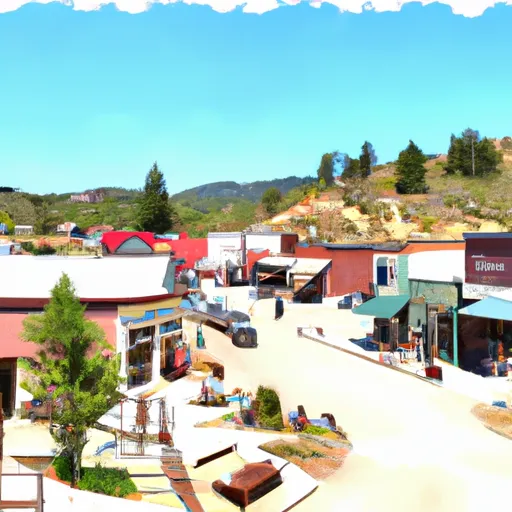-
 Snoflo Premium
Snoflo Premium
Get unlimited access to all our content
With no Ad interruptions! - Start Your Free Trial Login with existing account
Mc-Kittrick
Eden Index
Climate
8.7
•
Recreation
1.8
•
Community
•
Safeguard
4.1/10

McKittrick, California is a small unincorporated community located in Kern County. The climate in McKittrick is classified as semi-arid, with hot and dry summers and mild winters. Temperatures can soar to over 100 degrees Fahrenheit in the summer, while winters are generally pleasant with temperatures averaging in the 60s. The area receives very little rainfall, with an average of only 6 inches per year.
Hydrologically, McKittrick lies in the San Joaquin Valley, which is known for its vast oil fields and agriculture. The region relies heavily on groundwater for irrigation and domestic use. The hydrology of the area is characterized by the underground oil reservoirs and the need to manage water resources efficiently.
Despite its small size, McKittrick offers several outdoor recreation opportunities. The surrounding area is known for its scenic beauty, with rolling hills and stunning sunsets. Outdoor enthusiasts can enjoy activities such as hiking, camping, bird-watching, and horseback riding. The nearby Carrizo Plain National Monument provides opportunities for wildlife viewing and photography. Overall, McKittrick is a peaceful community offering a chance to explore the beautiful outdoors of California's San Joaquin Valley.
What is the Eden Index?
The Snoflo Eden Index serves as a comprehensive rating system for regions, evaluating their desirability through a holistic assessment of climate health, outdoor recreation opportunities, and natural disaster risk, acknowledging the profound impact of these factors on livability and well-being.
Climate Health Indicator (CHI): 8.7
Mc-Kittrick receives approximately
172mm of rain per year,
with humidity levels near 62%
and air temperatures averaging around
18°C.
Mc-Kittrick has a plant hardyness factor of
9, meaning
plants and agriculture in this region tend to thrive here all year round.
By considering the ideal temperature range, reliable water supplies, clean air, and stable seasonal rain or snowpacks, the Climate Health Indicator (CHI) underscores the significance of a healthy climate as the foundation for quality living.
A healthy climate is paramount for ensuring a high quality of life and livability in a region, fostering both physical well-being and environmental harmony. This can be characterized by ideal temperatures, reliable access to water supplies, clean air, and consistent seasonal rain or snowpacks.
Weather Forecast
Streamflow Conditions
Tulare-Buena Vista Lakes
Area Rivers
Tulare-Buena Vista Lakes
Snowpack Depths
Tulare-Buena Vista Lakes
Reservoir Storage Capacity
Tulare-Buena Vista Lakes
Groundwater Levels
Recreational Opportunity Index (ROI): 1.8
The Recreational Opportunity Index (ROI) recognizes the value of outdoor recreational options, such as parks, hiking trails, camping sites, and fishing spots, while acknowledging that climate plays a pivotal role in ensuring the comfort and consistency of these experiences.
Access to outdoor recreational opportunities, encompassing activities such as parks, hiking, camping, and fishing, is crucial for overall well-being, and the climate plays a pivotal role in enabling and enhancing these experiences, ensuring that individuals can engage in nature-based activities comfortably and consistently.
Camping Areas
| Campground | Campsites | Reservations | Toilets | Showers | Elevation |
|---|---|---|---|---|---|
| Bates Canyon | 6 | 2,778 ft | |||
| KCL - Carrizo Plains | 12 | 2,282 ft | |||
| Selby | 6 | 2,420 ft |
Catastrophe Safeguard Index (CSI):
The Catastrophe Safeguard Index (CSI) recognizes that natural disaster risk, encompassing floods, fires, hurricanes, and tornadoes, can drastically affect safety and the overall appeal of an area.
The level of natural disaster risk in a region significantly affects safety and the overall livability, with climate change amplifying these risks by potentially increasing the frequency and intensity of events like floods, fires, hurricanes, and tornadoes, thereby posing substantial challenges to community resilience and well-being.
Community Resilience Indicator (CRI):
The Community Resilience Indicator (CRI) recognizes that education, healthcare, and socioeconomics are crucial to the well-being of a region. The CRI acknowledges the profound impact of these elements on residents' overall quality of life. By evaluating educational resources, healthcare accessibility, and economic inclusivity, the index captures the essential aspects that contribute to a thriving community, fostering resident satisfaction, equity, and social cohesion.

